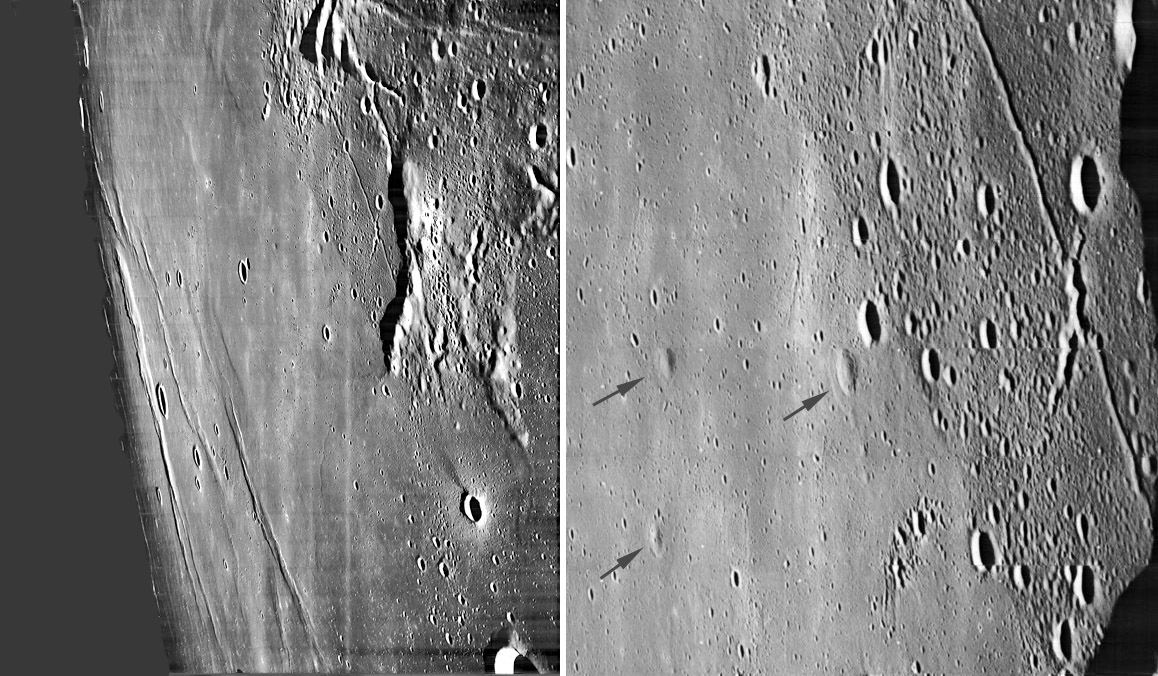May 27, 2018
Burying Craters
Originally published February 8, 2009

LO III image 161 from LPI Lunar Orbiter Photo Gallery
Forty-two years ago today a spacecraft entered lunar orbit. The goal of Lunar Orbiter III was to image potential landing sites for Apollo. It did, including many images valuable for science. This is one that was included in a paper colleagues and I published to show how lava flows can transform crater morphology. This view is of central Oceanus Procellarum, southwest of Encke and south of Maestlin; the crater cut in half at bottom right is Encke E and the bright one above it is Encke X. The area of interest is inside the slightly curved ridge near the right top. Notice that inside it is a heavily craters bit of mare crosed by the linear Maestlin Rille. To west of the rille is an abrupt boundary where less cratered mare sharply meets the heavily cratered material. The less cratered mare is younger and apparently covers some of the more cratered, older mare. The three arrows identify what were originally normal impact craters covered by a thin layer of the younger lava. Just east of the crater marked by the rightmost arrow is an unflooded example of an impact crater of about the same size - a before and after view. The latter two craters are about 1.5 km in diameter - they and the boundary ought to be image-able from someone's backyard.
Chuck Wood
Technical Details
Remarkably, we saw volcanic craters covered by lava in Hawaii that then looked very much like these coated lunar craters.
Related Links
Rükl plate 29
Yesterday's LPOD: The Great Wall of Procellarum
Tomorrow's LPOD: Tapering Towards the Terminator
COMMENTS?
Register, Log in, and join in the comments.



